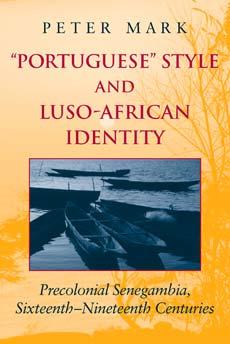
Zustellung: Mo, 11.08. - Sa, 16.08.
Versand in 3-4 Wochen
VersandkostenfreiBestellen & in Filiale abholen:
"Portuguese" Style and Luso-African Identity sheds light on the dynamic relationship between identity formation, social change, and material culture in West Africa.
Inhaltsverzeichnis
Preliminary Table of Contents:
Acknowledgments
Introduction
1. The Evolution of "Portuguese" Identity: Luso-Africans on the Upper Guinea Coast from the 16th to the Early 19th-Century
2. Sixteenth and Seventeenth-Century Architecture in the Gambia-Geba Region and the Articulation of Luso-African Ethnicity
3. Reconstructing West African Architectural History: Images of Seventeenth-Century "Portuguese" Style Houses in Brazil
4. "The People There Are Beginning to Take on English Manners": Mixed Manners in Seventeenth and Early Eighteenth-Century Gambia
5. Senegambia from the Mid-Eighteenth Century to the Mid-Nineteenth Century
6. Casamance Architecture from 1850 to the Establishment of Colonial Administration
Conclusions and Observations
Notes
Bibliography
Index
Acknowledgments
Introduction
1. The Evolution of "Portuguese" Identity: Luso-Africans on the Upper Guinea Coast from the 16th to the Early 19th-Century
2. Sixteenth and Seventeenth-Century Architecture in the Gambia-Geba Region and the Articulation of Luso-African Ethnicity
3. Reconstructing West African Architectural History: Images of Seventeenth-Century "Portuguese" Style Houses in Brazil
4. "The People There Are Beginning to Take on English Manners": Mixed Manners in Seventeenth and Early Eighteenth-Century Gambia
5. Senegambia from the Mid-Eighteenth Century to the Mid-Nineteenth Century
6. Casamance Architecture from 1850 to the Establishment of Colonial Administration
Conclusions and Observations
Notes
Bibliography
Index
Produktdetails
Erscheinungsdatum
01. Dezember 2002
Sprache
englisch
Seitenanzahl
222
Reihe
Indiana University Press (IPS)
Autor/Autorin
Peter Mark
Verlag/Hersteller
Produktart
kartoniert
Gewicht
354 g
Größe (L/B/H)
240/151/18 mm
ISBN
9780253215529
Bewertungen
0 Bewertungen
Es wurden noch keine Bewertungen abgegeben. Schreiben Sie die erste Bewertung zu "Portuguese Style and Luso-African Identity" und helfen Sie damit anderen bei der Kaufentscheidung.









